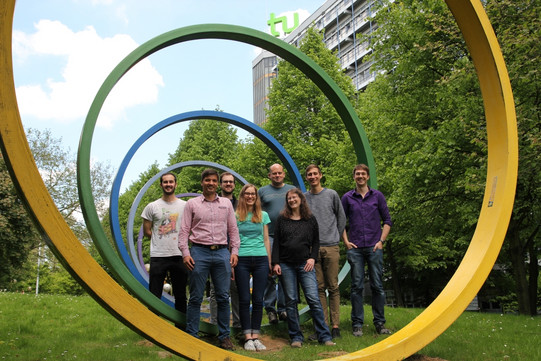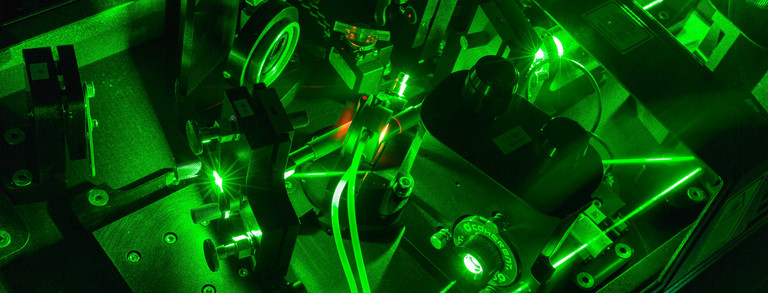Experimentelle Physik 2b
Spin Dynamics and Spin Transport:
The idea of exploiting the spin degree of freedom for information processing initialized huge efforts to explore mechanisms of spin injection and schemes to investigate spin dynamics in semiconductors and nanostructures. Optical spectroscopy with femtosecond laser pulses provides a unique tool to investigate such phenomena. On the one hand side, spins can be optically prepared using circularly polarized laser pulses, i.e., by exploiting the selection rules for optical interband transitions. On the other hand, the dynamical magnetization associated with optically oriented electron spins can be directly measured via the Faraday and/or Kerr effect. In addition optical microscopy techniques offer the advantage of spatial resolution on the micrometer length scale. This additional spatial resolution provides, e.g., insight into coherent spin rotations related to spin-orbit interactions during charge carrier transport.
Within our research group we have developed profound expertise to investigate the spatio-temporal evolution of optically injected spin distributions on the length and timescales of micrometers and picoseconds, respectively. Many of the ongoing research activities in this field are part of the ICRC – TRR 160 “Coherent manipulation of interacting spin excitations in tailored semiconductors” (Dortmund/St. Petersburg). Current experiments are related to the following subjects:
- spin injection into indirect semiconductors such as germanium
- electrical tuning of electron spin coherence and spin-orbit interactions in GaAs based two-dimensional electron gases
- spin diffusion and spin-orbit interactions in CdTe quantum wells
- spin diffusion in novel monolayer materials
Ultrafast and Nonlinear Optics of Semiconductors and Nanostructures:
Semiconductors and semiconductor-based nanostructures typically exhibit large optical nonlinearities which are often further enhanced by electronic resonances. On the one hand side these nonlinearities can be directly exploited for nonlinear optical processes such as two-photon absorptions and frequency conversions. On the other hand the strong nonlinear response can be used for the analysis of carrier dynamics after ultrafast photoexcitation. Both approaches rely on the use of modern femtosecond laser pulses with typical peak powers in the MW range. Many of the ongoing research activities in this field are part of the ICRC – TRR 142 “Tailored Nonlinear Photonics: From Fundamental Concepts to Functional Structures” (Paderborn/Dortmund). Current experiments are related to the following topics:
- two-photon absorptions in optically excited semiconductors
- intersubband physics in GaN/AlN heterostructures
- nonlinear optical response of VO2 nanocrystals
Current offers for Bachelor-, Master- or PHD-theses
Please contact Prof. M. Betz if you are interested in thesis work on these topics.

Contact
- Prof. Dr. Markus Betz



